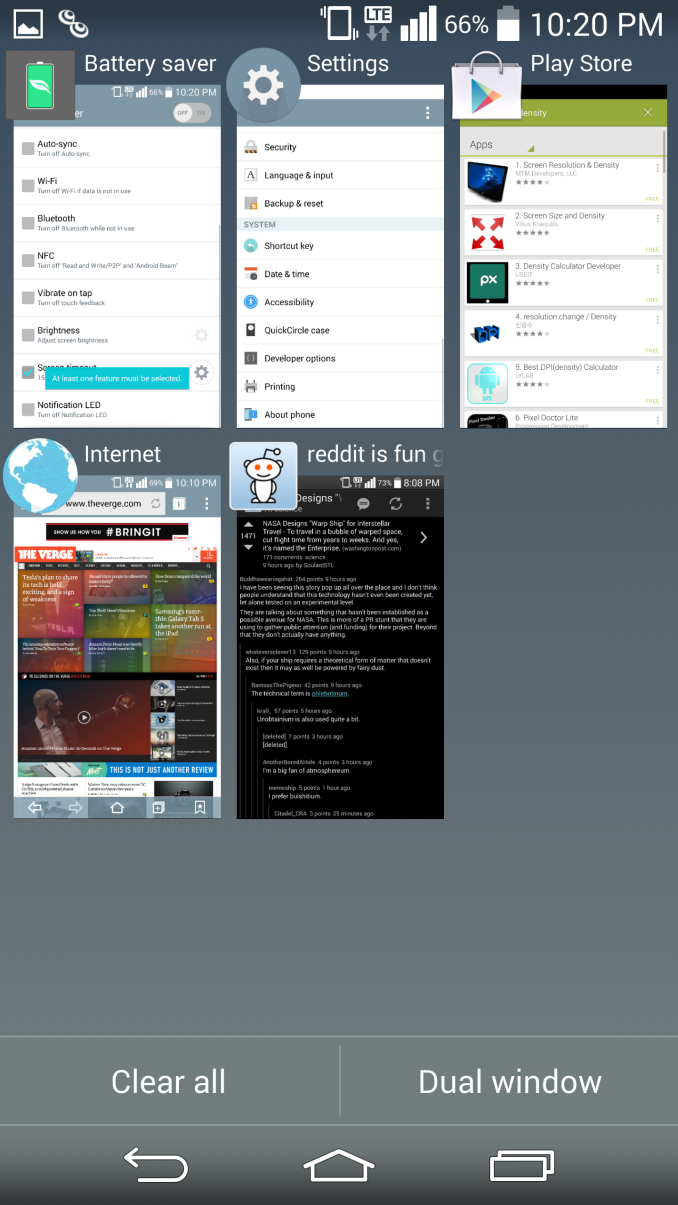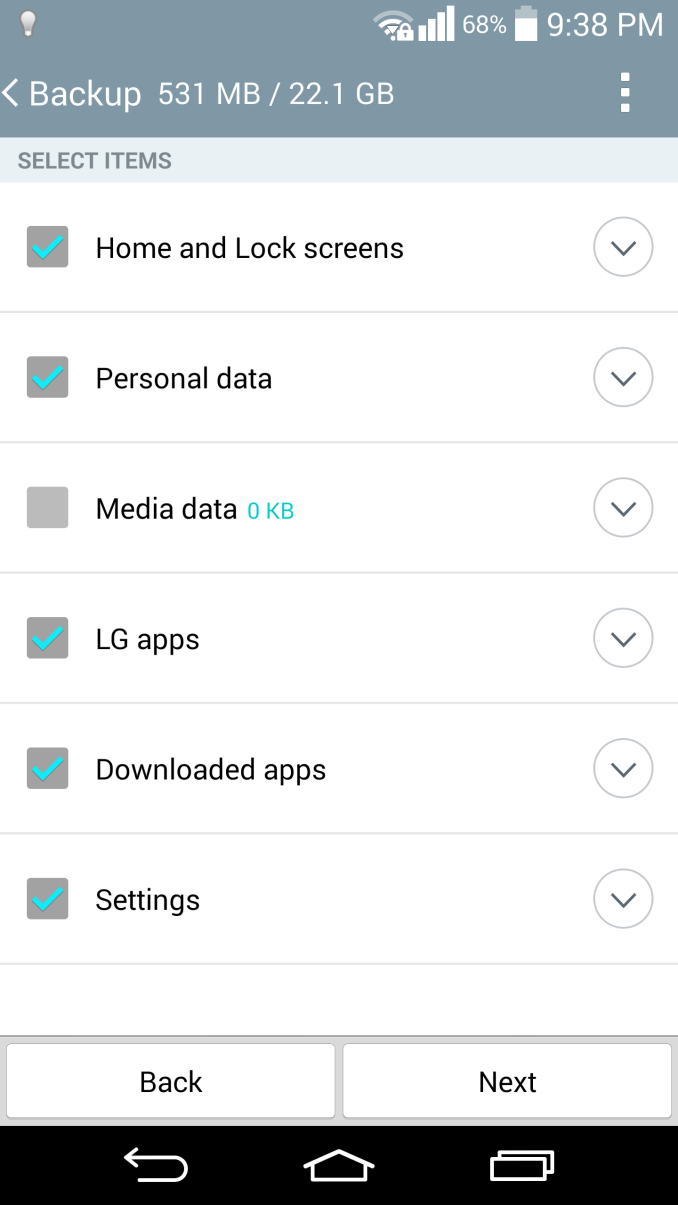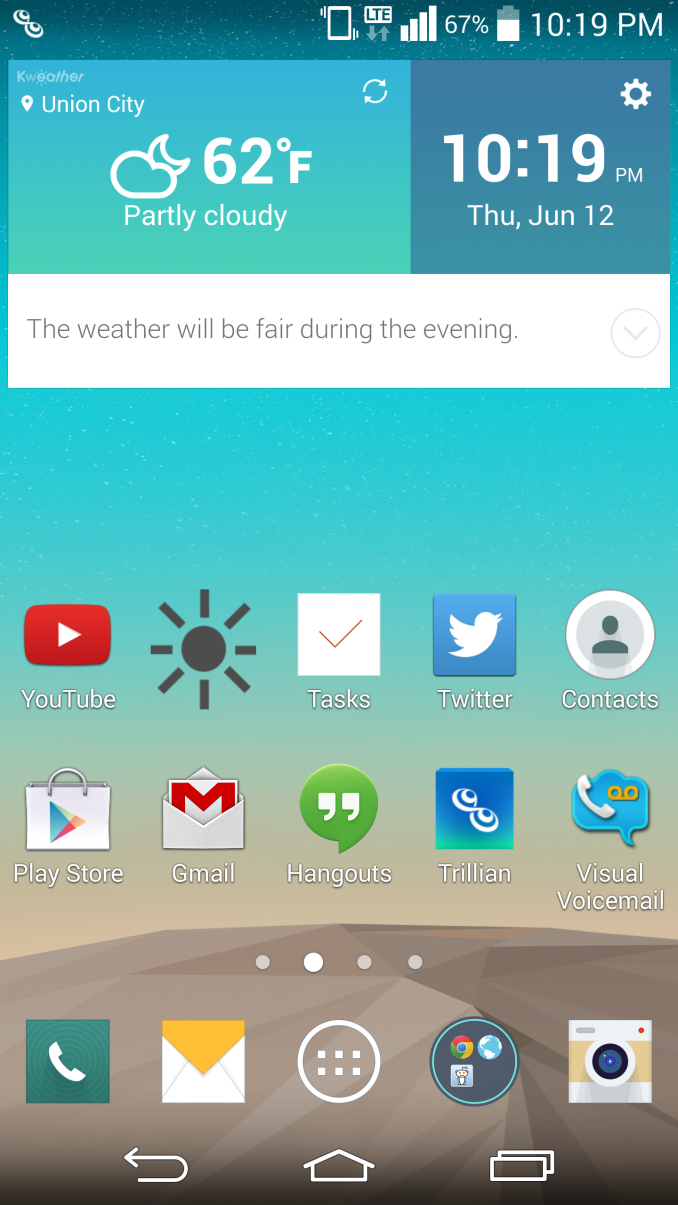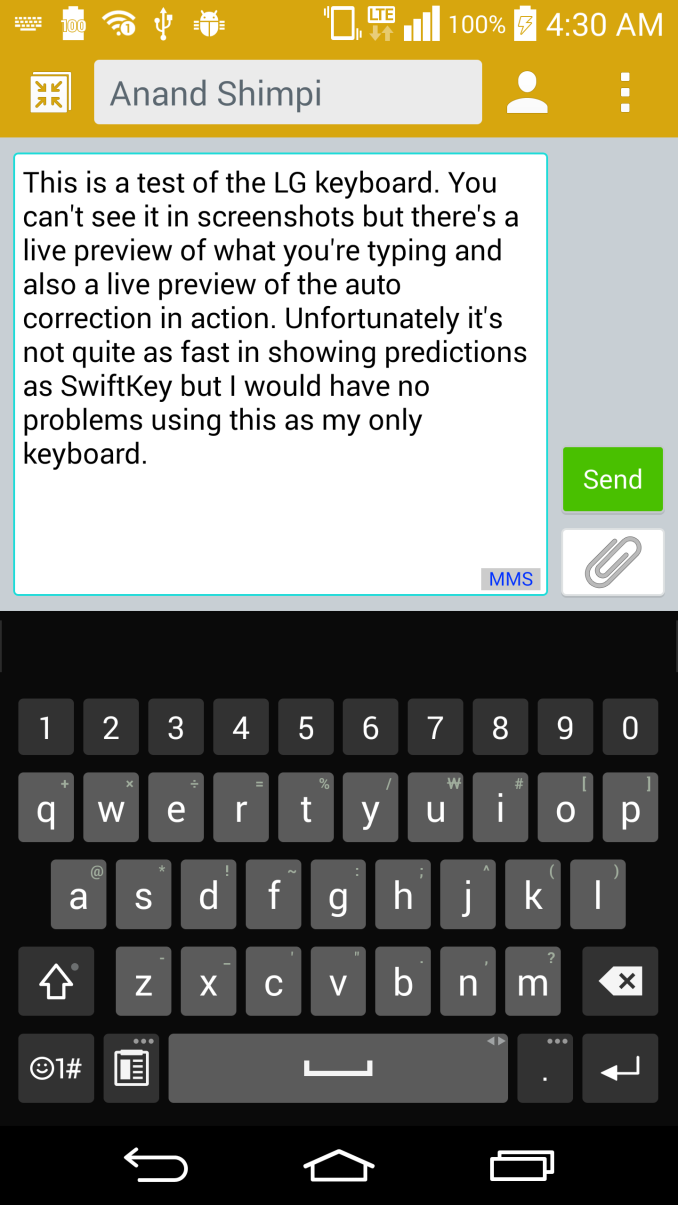The LG G3 Review
by Joshua Ho & Anand Lal Shimpi on July 4, 2014 5:00 AM EST- Posted in
- Smartphones
- LG
- Mobile
- Laptops
- G3
Software
Lately, there’s been a significant trend towards flatter, simpler UIs. While HTC jumped on the trend early with Sense 5 launching on the One (M7), the Korean OEMs have been noticeably slower to move towards this simplification. In this case, Samsung refreshed TouchWiz for the Galaxy S5, and LG has done the same for the G3. While I had very little trouble getting around LG’s UI before this refresh, it definitely struggled in the aesthetic department. LG previously had a strongly skeuomorphic UI, which meant that the UI elements were designed to resemble physical objects. While this may have helped back when computers were a novel invention, it doesn’t make quite as much sense now. Thankfully, LG has gotten far away from this. Overall, there’s very little unnecessary depth to the user interface, and the result is definitely aesthetically pleasing, although opinions may vary. I definitely feel like this interface is very close in aesthetic design to the Galaxy S5’s TouchWiz UI, although the functionality is different. The only real criticism I have here is that the odd shadow effect on icons should go away, although it doesn’t truly affect the overall design.
While opinions on how a UI works (or doesn’t) are mostly subjective, in my experience there have been far fewer friction points in the G3 UI when compared to TouchWiz in general. The best example of this is the multiwindow mode in the G3. While Samsung has done a great job of getting widespread developer adoption for their interface, LG has clearly put more thought into the user experience here. Instead of requiring the user to mentally keep track of whether to use Android’s task switcher or the multiwindow option, the multiwindow toggle is in the task switching menu, which means it’s far more likely that it will be used as needed. The multiwindow functionality also allows for switching immediately to the last two windows used to save time. The only issue I have here is that manipulating open windows isn’t as easy as it should be. This is because closing one of the windows is done by tapping the tab separating the two rather than simply swiping up or down. It does make sense once you learn how it works, but may confuse some at first.
LG isn’t perfect at this though, there are some issues such as the email client. Specifically, email providers like Hotmail/Microsoft don’t work properly if set up as a POP/IMAP account, and rely on the user to know that they have to set up Hotmail as an Exchange account. For the most part though, these issues are rare. LG seems to have done a good job with their applications, with cohesive design throughout that utilizes Google design guidelines. Things like the smart cleaning application in settings, and the LG backup application are all ways that LG has actually improved the user experience. There really aren’t a lot of friction points in the usability of stock applications, other than the ones clearly designed for SKT or are otherwise Korea-only.
Of course, LG’s “gimmicks” also tend to be more useful as well. While I struggled with some unreliability on KnockCode for the G Pro 2, the G3’s version is great in practice. KnockOn and KnockOff both work as expected too. These features are all easy to grasp as well, with very little learning curve. The same isn’t necessarily true for features that ship with the Samsung Galaxy S5, such as the fingerprint sensor. It's not all perfect though, as Smart Notice doesn’t seem to be useful most of the time. Fortunately, it won’t get in your way and it’s integrated well into the clock/weather widget. While both LG UI and TouchWiz have a largely similar experience, I think that LG ends up with a less frustrating one. There are some issues with clutter in the notification bar though, as out of the box there’s almost no room for actual notifications. Althought annoying, it's easily solved by toggling away most of the unnecessary settings.
Overall, I’m happy with LG’s UI. The annoyances are few and far between, and LG has adopted a solid aesthetic design for this generation. While I didn’t notice a significant delta in overall performance compared to the One (M8), I did notice that the G3 had more issues with stutter in animations overall. I suspect that this has relatively little with the UI design itself, as most animations are simple panning movements without 3D effects.
















174 Comments
View All Comments
SlyFoxHD - Friday, July 4, 2014 - link
LG G3 battery can withstand 6 hours of screen-on time,on full brightness.And watch
Suck it up.
http://www.phonearena.com/news/First-improvised-LG...
Flunk - Friday, July 4, 2014 - link
What you're saying isn't really compatible with what's said in this article, if it dims the screen even when you set the brightness manually how can you possibly test at 100% brightness?Troll fail.
mahalie - Friday, July 4, 2014 - link
It only dims the screen slightly if the phone is in danger of overheating, so it's possible to test the screen at 100% brightness.Alexey291 - Sunday, July 6, 2014 - link
So its 100% but its not full brightness - way to twist words /sighfokka - Friday, July 4, 2014 - link
full brightness*david4041 - Friday, July 4, 2014 - link
No.. If LG G3 had the same resolution as the GS5 or M8, with the bigger screen it would not have been as sharp (ppi). What LG managed to do was build a phone with a significantly bigger screen AND a higher ppi. And since the G3 has a thinner bevel, it isn't much bigger than the GS5 and M8.Battery life? From what I've read, the phone should last all day. That's all one really needs. Charge the phone at night, charge it while you're at your desk, charge it in the car, buy an extra battery, buy a battery pack.
peterfares - Friday, July 4, 2014 - link
It would have been plenty sharp with an RGB 5.5" screen. Look at the Note 3, that has a PenTile 1080p 5.7" screen.soldier45 - Sunday, July 6, 2014 - link
Haters going to hate innovation and moving forward with tech.flatrock - Tuesday, July 8, 2014 - link
The G3 is a showcase for what LG is capable of, so spec-sheet oneupmanship is to be expected. I would like to see 1080p screens show up on some slightly smaller and more affordable devices. Or LG can just keep making the G2 for a while. The G2 is a great phone and is still a high end phone even this long after the initial release. If the G3 didn't pull some spec-sheet oneupmanship the reviews would just be complaining about a lack of compelling differences from the G2. I guess it's the price LG pays for doing the G2 so well.barleyguy - Tuesday, July 8, 2014 - link
One place I can think of where the resolution would be a benefit, is Google Cardboard, or future VR implementations that use the same idea. With VR, the resolution of a small screen makes a significant difference, from what I've read.I'm pondering a G3 for that reason, as well as the removable battery and SD slot.